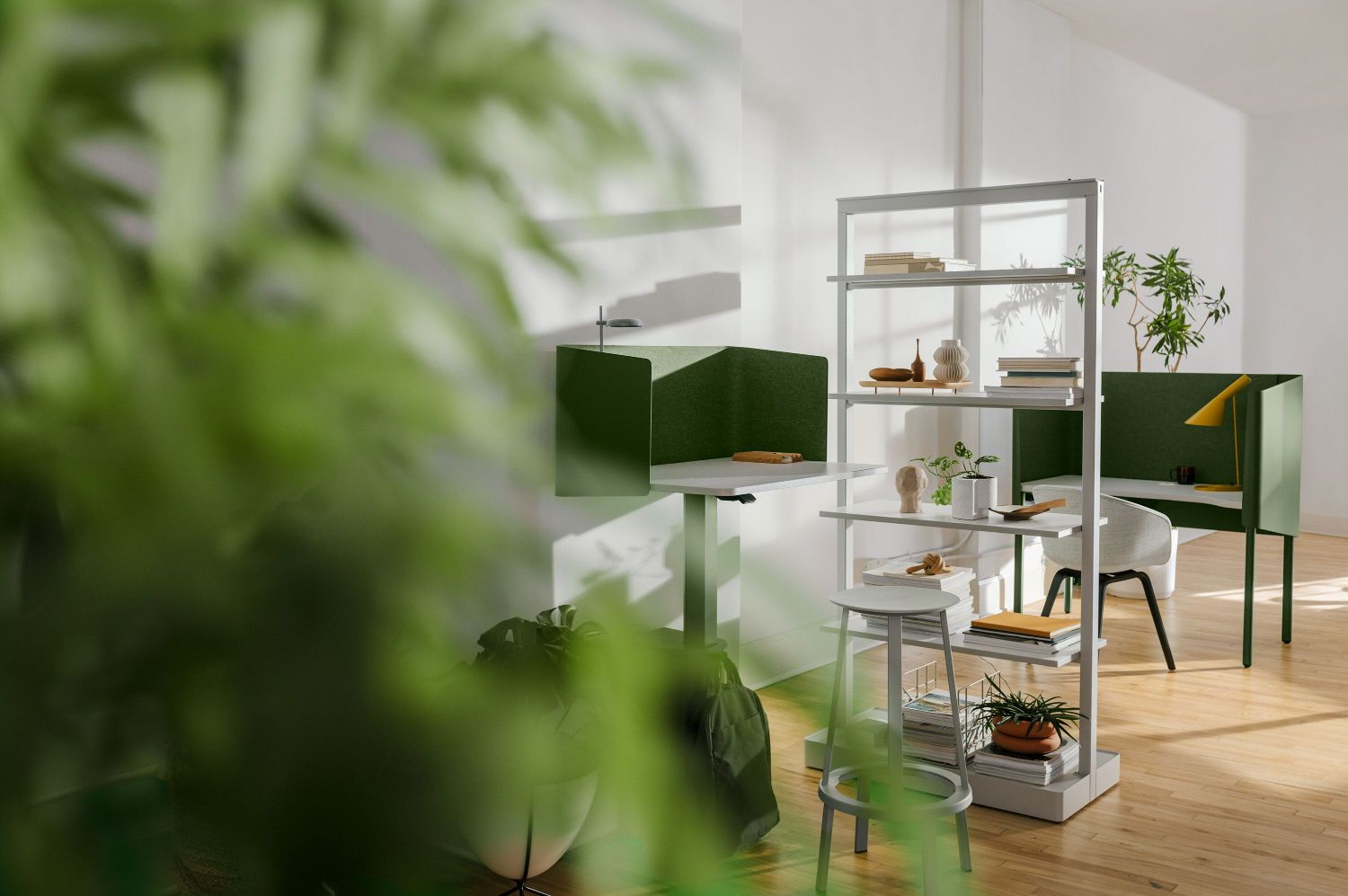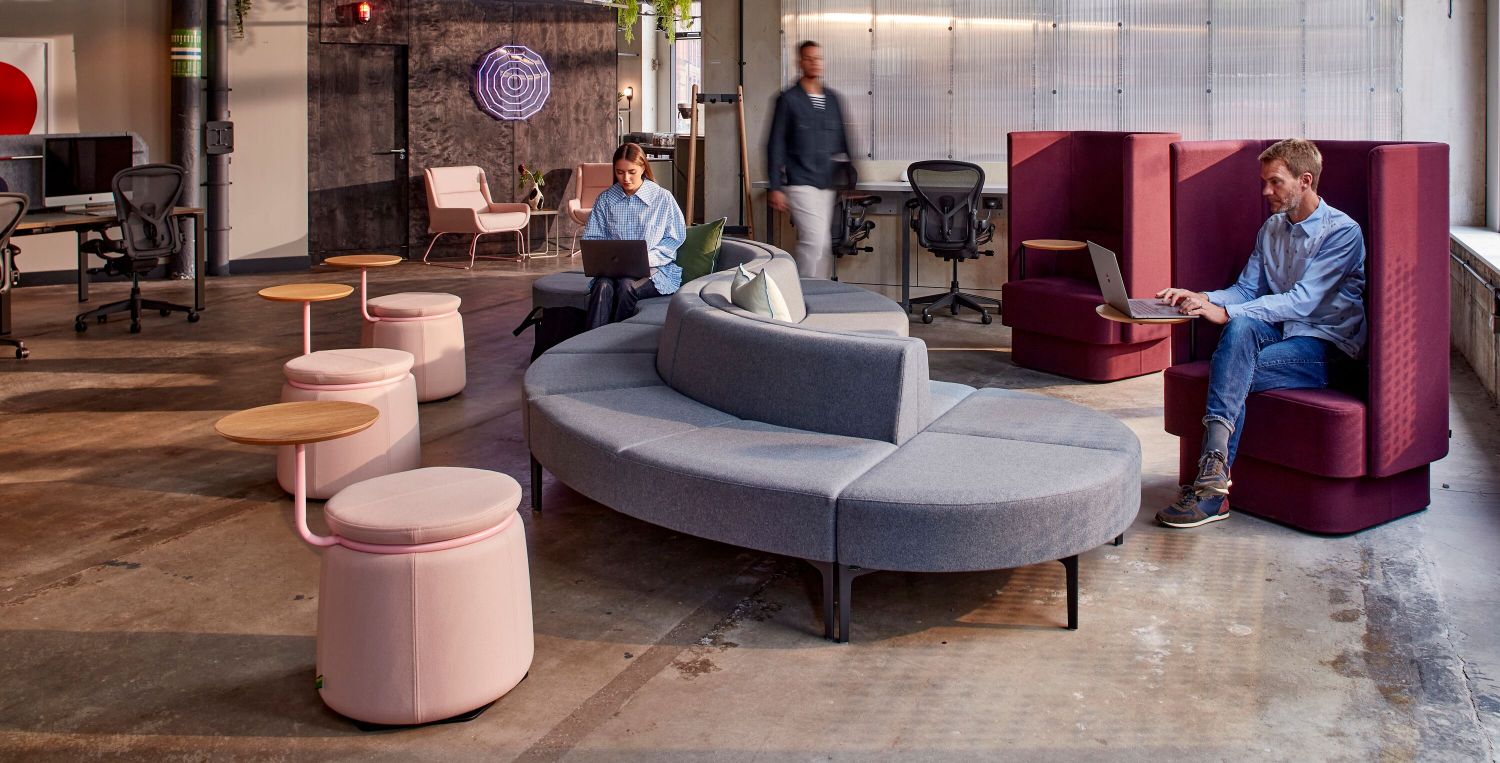This year we’ve had a unique opportunity to talk to two excellent experts in the field of office design and equipment: Ryan Anderson, Vice President of Global Research & Insights at MillerKnoll and Joseph White, Director of Design Strategy at MillerKnoll. We discussed the changing role of the office, the impact of these changes on the organization of work, as well as the responsibility of MillerKnoll in the area of sustainable development. An abridged version of this interview was published in the magazine “Salon Polityki” no. 11. Here on our blog we’ll be sharing with you the full version published in parts. The first installment concerns a very current topic of returning to offices after breaks caused by the pandemic. As Ryan Anderson observes, “Offices are becoming an on-demand resource.” What does this perspective involve and how will it change the design of the workspace?
This is the time of a great return to the office. What needs to change in order to make employees more willing to return to stationary work? What should be the focus of managers?
Ryan Anderson: MillerKnoll is one of the founders and members of the Future Forum research consortium. Every quarter, it conducts surveys among 10,000 white-collar workers from around the world. 79% of them want more flexibility as to where they can work – aside from the office – and 94% as to when they can work. So we need to rethink the whole traditional concept of the workweek and take into account the diversity of employees’ priorities. For example, some people take care of children or elderly parents, and thus would prefer more flexible work hours. They want more autonomy in determining the times they will be most productive in the office.

Offices are becoming more of an on-demand resource. They are an important, maybe even the most important place where we do our work, but not the only one. Therefore, they should start emphasizing those experiences and solutions that are not equally available and well supported elsewhere. We know that short meetings on Zoom, for example, are very convenient for small teams, but video is not the right tool for spontaneous, in-depth or long-term work on projects and solving problems. This is why we need to change conference rooms into teamwork rooms and rethink the role of social zones in offices, so that they help integrate teams and encourage relaxation. We simply need to show employees that in offices they can count on quality interactions that are difficult to achieve when relying on technology alone. This is a good starting point.
Our research shows that being able to fully focus on working from home is still the biggest challenge. It’s not that we can’t concentrate at home. There are just many more distractions, like children or pets. Employees are aware that it is the office that supports the ability to fully focus on work tasks. However, in my opinion, modern workspaces are not well adapted to achieving this goal. Open space, a sea of desks, traditional conference rooms – these solutions don’t really support focused work. This doesn’t attract people. They know they have other options. So I think that the key to finding a space for quiet work is to change the perspective of both managers and employees. The former should think of the office as a product, and employees as customers. They have to ask themselves: what do they need and how can we adapt what we have?

In my work, I usually don’t encourage a complete revolution in the office arrangement. I prefer to adapt what is already there to the changed needs. I always make sure that we support those experiences that people are missing. Only then do I move to the implementation phase. I have the impression that managers are not used to direct communication with employees who use the offices. And this is, in my opinion, the essence of creating better work places. Thanks to such an exchange of opinions, employees will understand that offices are not just a place where they have to go every day, but a space designed to support their work and provide positive experiences.

